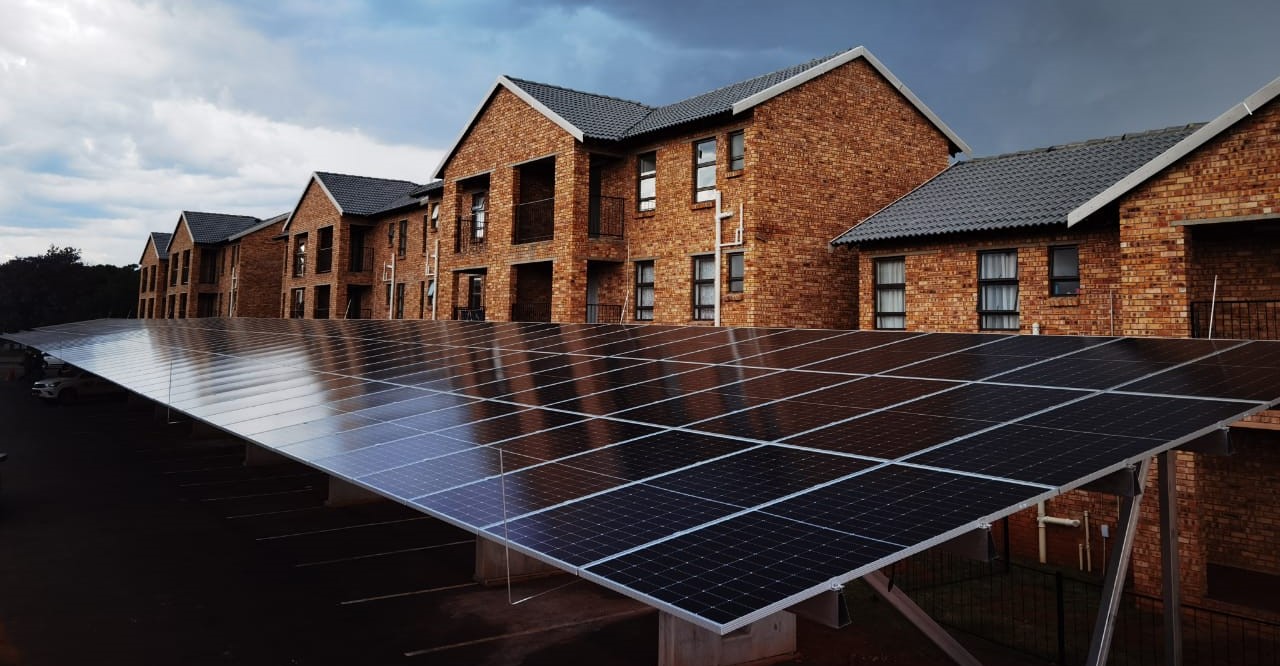Image: Sosimple Energy (Pty) Ltd
Zambia is poised to be the latest African market to legislate for the introduction of net metering as a means of driving forward the continent’s energy transition.
With big-solar making impressive advances and commercial and industrial (C&I) arrays the focus of much market activity of late, the role rooftop panels can have in phasing out fossil fuels finally seems to have caught the attention of policymakers.
The Zambian Ministry of Energy’s Energy Regulation Board in August opened a consultation period for a draft of its proposed net metering rules as the country focuses on the need to add 720 MW of solar generation capacity by 2040.
If that future electricity needs figure, set last year by the 2021 Electricity Sector Cost of Service Study, proves to be as conservative as feared, net metering will have to be a success in the nation.
What is net metering?
The draft rules from Lusaka set no limit on the size of solar arrays to participate in net metering – a system enabling solar owners to export any power they do not consume to the grid and, in turn, receive energy unit credits off their electric bills.
The only limit on system size is a stipulation any solar projects with a generation capacity larger than both 250 kW and the existing grid connection at the premises, would require the solar system “prosumer” – electricity producer and consumer – to pay for any grid upgrades necessary.
The advent of net metering in Zambia, following similar moves in South Africa, Ghana, Kenya, Senegal and The Gambia, is a welcome development even if, as Lusaka-based legal practice Moira Mukuka has pointed out, the draft legislation does not make clear whether C&I prosumers can apply, and does not identify a guarantor to step in if state utility Zambia Electricity Supply Co Ltd cannot make the payments mandated to generators.
Cape Town cash
With the local authorities in Cape Town not holding back in their criticism of South African utility Eskom over the years, mayor Geordin Hill-Lewis is overseeing a net metering and feed-in tariff (FIT) regime that offers attractive flexibility in how prosumers can cash in on the power they export, as reported by American website CleanTechnica in August.
With the scheme, as yet, open only to C&I solar system owners – although the plan is to widen it to households at some stage – business prosumers can either claim a reduction off their electric bill, a cash payment or can use the ZAR0.7387/kWh rate to reduce other company bills.
As CleanTechnica pointed out, that means businesses with big, solar-friendly roofs in Cape Town can install panels which will benefit their operations in other locations.
And the idea is catching on.
More net metering
The Gambia has had net metering and FITs in place since its Renewable Energy Act was passed in 2013. In July, new minister of petroleum and energy, Abdoulie Jobe, validated the scheme, which pays $0.25/kWh for excess power exported to the grid by systems with a generation capacity of 20 kW-1.5 MW.
Bigger arrays can sign a 15-year agreement to have their electricity bought by state-controlled utility Gambia National Water & Electric Company, as highlighted in an article by Cape Town-based energy investment website Energy Capital & Power.
Elsewhere, the Botswana Rooftop Solar Program introduced by Gaborone in late 2020, and backed by US development body USAID’s Power Africa cash, applies to residential and C&I prosumers.
Home solar systems, up to 35 kW in size, can participate and that size limit extends to 1 MW for businesses, although the initial program was capped at a total 10 MW of rooftops during its first year– 2 MW of domestic arrays and 8 MW of C&I panels, according to Berlin-based solar industry site pv magazine. The Department of Energy scheme also requires systems should be no larger than 110% of the previous year’s electricity bill for the relevant premises.
With legislators across the continent following solar superpower China’s lead in turning their gaze on rooftop panels, there could be a boom in prospects for installers in the years ahead.



